
MinerAlert

MinerAlert
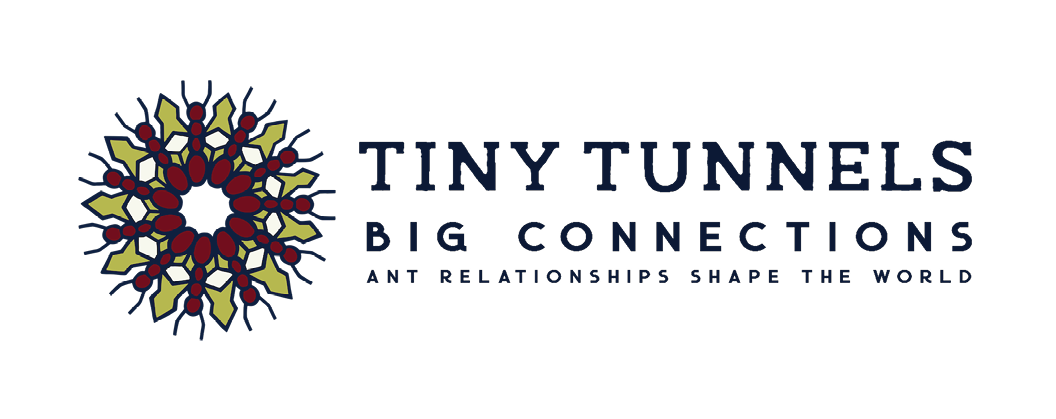
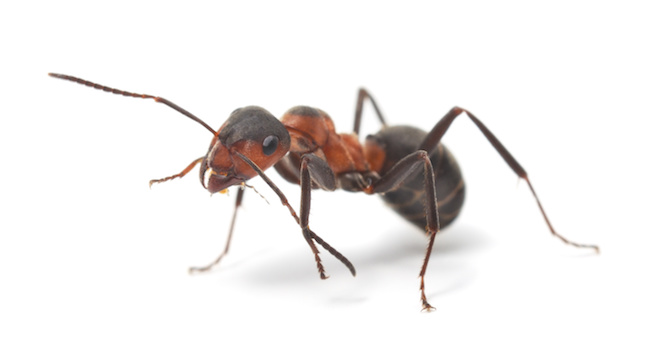 Ants are insects of the family, Formicidae, that live in colonies. By examining shared traits in anatomy and genetics, scientists discovered that ants are most closely related to wasps and bees. Ants arose during the Cretaceous period (145 to 79 million years ago) when dinosaurs still existed. Myrmecologists, or scientists who study ants, continue to discover new species every year. An estimated 22,000 species live everywhere in the world, except for Antarctica and a few islands.
Ants are insects of the family, Formicidae, that live in colonies. By examining shared traits in anatomy and genetics, scientists discovered that ants are most closely related to wasps and bees. Ants arose during the Cretaceous period (145 to 79 million years ago) when dinosaurs still existed. Myrmecologists, or scientists who study ants, continue to discover new species every year. An estimated 22,000 species live everywhere in the world, except for Antarctica and a few islands.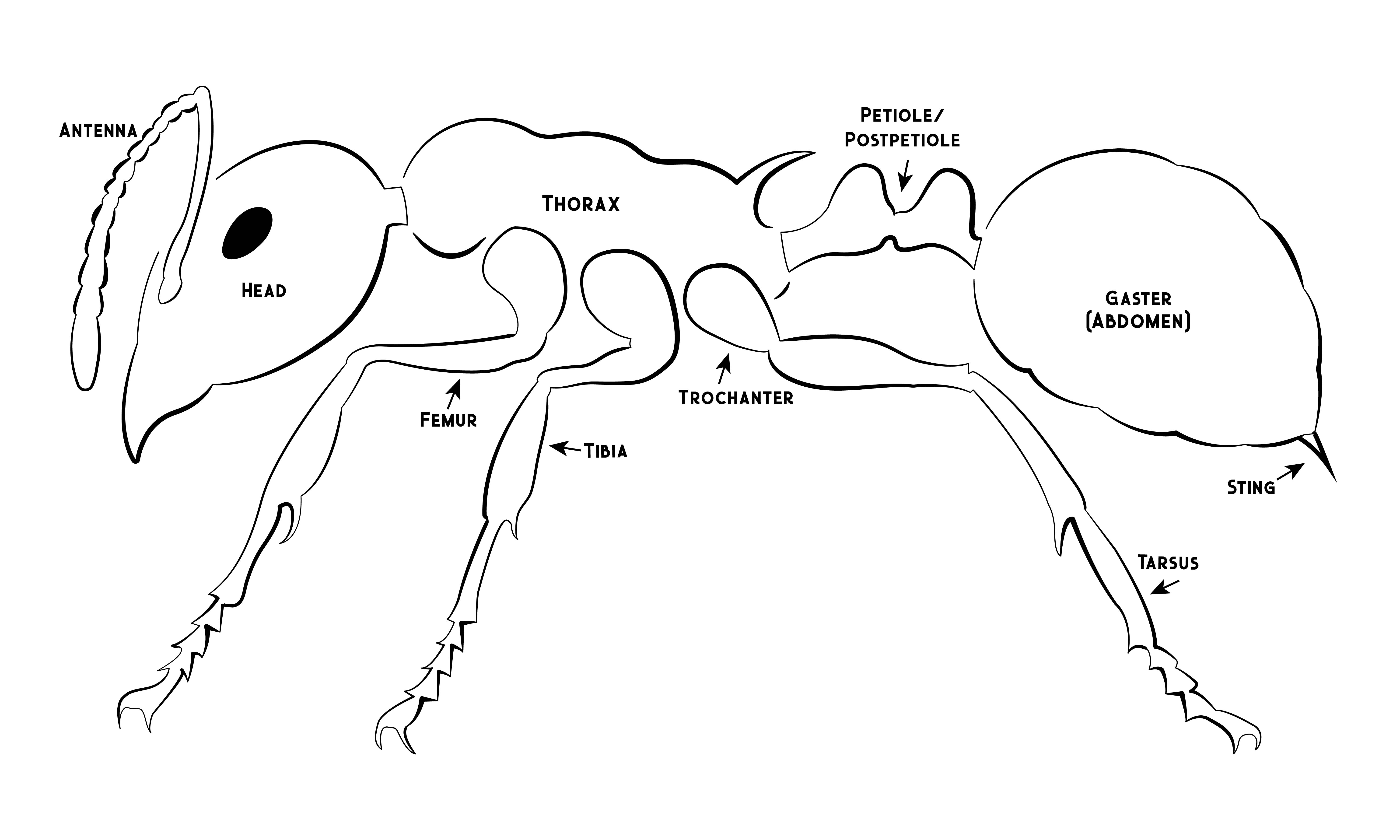 Ant anatomy is diverse and can look very different across species, but all ants have the same basic parts. Ants can be identified quickly from other insects by two traits: They have a waist called a petiole and antennae that are elbowed.
Ant anatomy is diverse and can look very different across species, but all ants have the same basic parts. Ants can be identified quickly from other insects by two traits: They have a waist called a petiole and antennae that are elbowed.
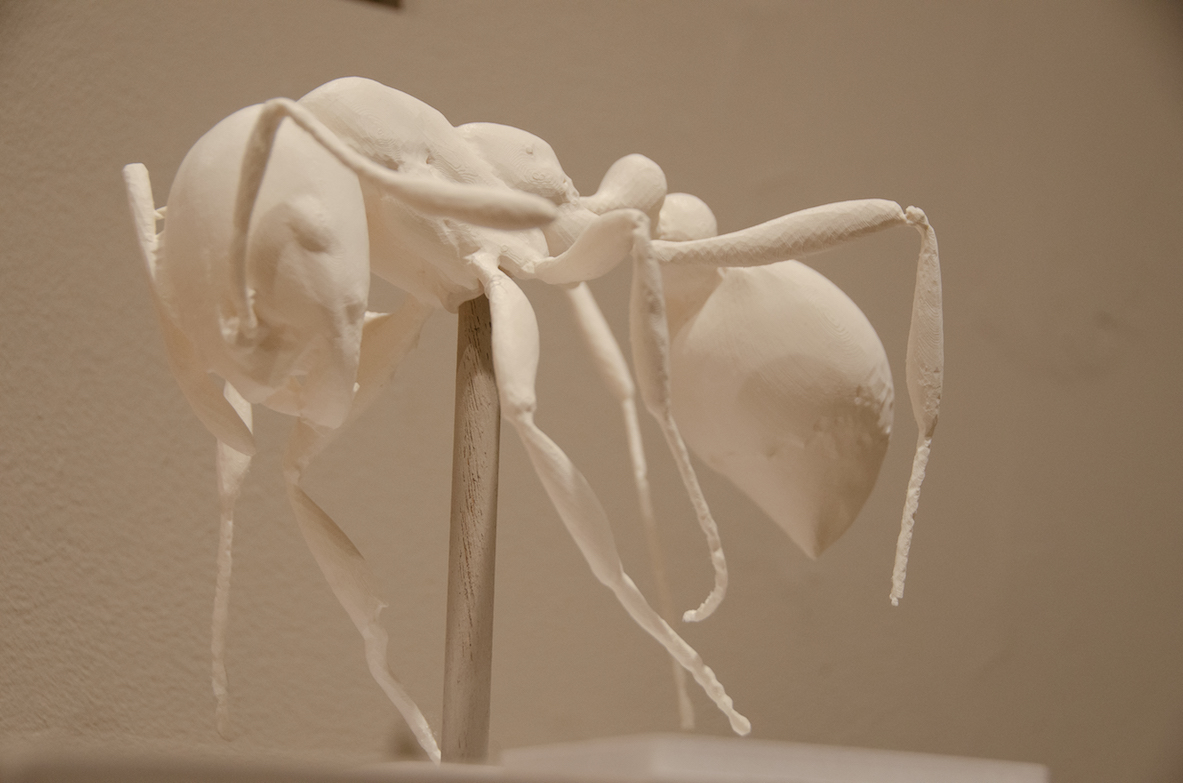
Red Imported Fire Ant - Solenopsis Invicta by Economolab on Sketchfab

Queens are much larger than the workers and males. Their thoraxes are larger and are more complicated. Both queens and males have wings, but queens usually lose their wings after finding a home for their colony. Queens spend their lives producing workers.

Workers are always wingless and female. They are almost always smaller than the queens and usually do not reproduce. Workers do all kinds of jobs like harvest, farm, nurse ant babies, clean the colony, and defend the colony. Depending on their job, workers can look different, for example, soldier workers defend the colony and therefore, may have large heads so that they can bite any aggressors.

Males also have wings, but smaller heads. Their gasters tend to be skinny and long.
Some of the deepest connections that two different living things can have with each other are symbiotic ones. These relationships can last for a long time; however, the interactions are not always beneficial. Generally, scientists classify relationships into three different types, easily distinguished by how each partner is affected:
Mutualism: Both partners benefit each other.
Commensalism: One partner benefits, the other partner neither benefits nor suffers.
Parasitism: One partner benefits, the other partner is harmed.
Some of these connections are so important that the organisms cannot survive without each other. Animals and plants in these relationships co-evolve together in ways that strengthen their association.
Think of a relationship that you have with another person or animal. What kind of symbiotic relationship was it? Take part in the poll below!
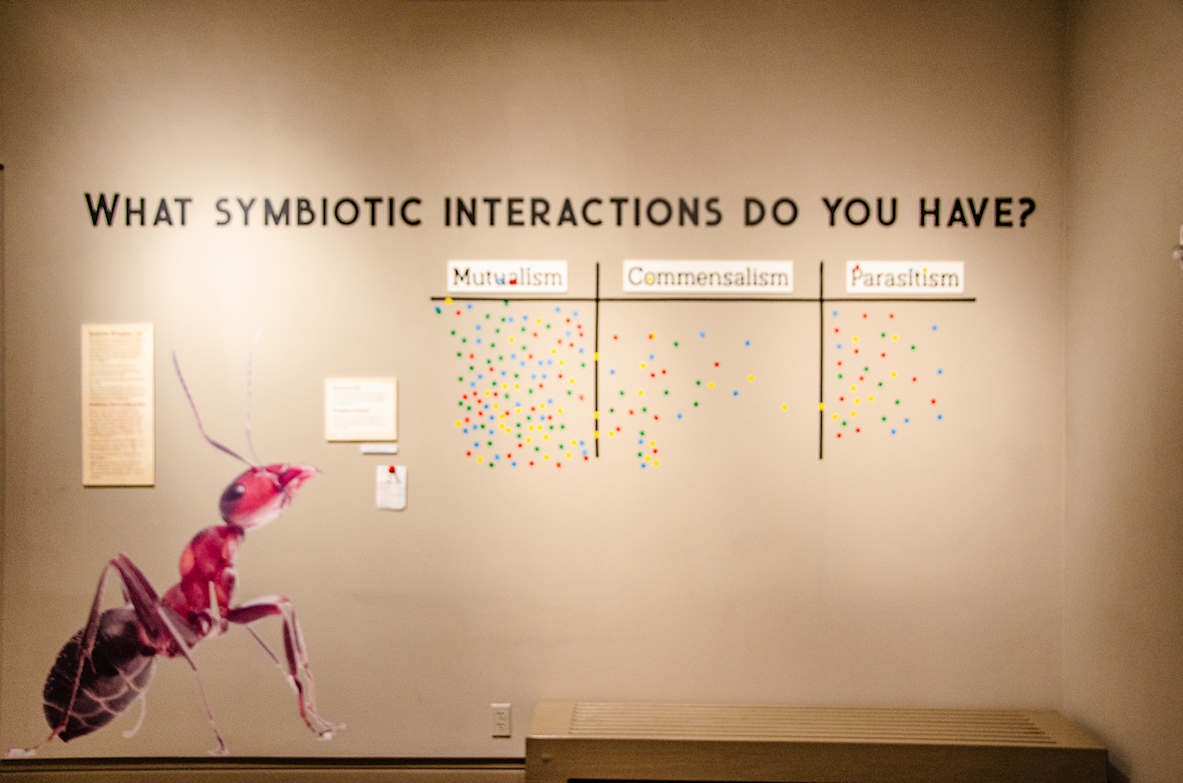
Picture of the poll in our gallery.
Ants are called ecosystem engineers because their interactions with other organisms help the entire ecosystem. Ants act as farmers by helping fungi grow, or as ranchers that herd and defend aphids and butterfly caterpillars. In return, these organisms provide ants with food. Ants can act as warriors by defending plants from animals. Trees like the Cecropia, in turn, provide homes for specific ant species. Ants also help plants by dispersing seeds in return for food. When mutualism happens every organism involved benefits. Some of these relationships have a long history where both partners evolve adaptations that facilitate and deepen mutualistic relationships.
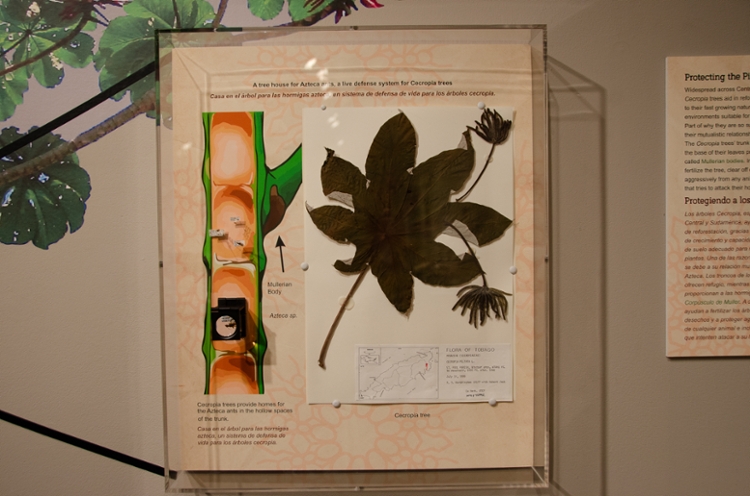 Widespread across Central and South America, Cecropia trees aid in reforestation efforts, thanks to their fast-growing nature and ability to create soil environments suitable for new plant communities. Part of why they are so successful is because of their mutualistic relationship with the Azteca ants. The Cecropia trees’ trunk provides shelter, while the base of their leaves provide the ants with food, called Mullerian bodies. In exchange, the ants help fertilize the tree, clear off debris, and defend the plant aggressively from any animal or even parasitic plant that tries to attack their host.
Widespread across Central and South America, Cecropia trees aid in reforestation efforts, thanks to their fast-growing nature and ability to create soil environments suitable for new plant communities. Part of why they are so successful is because of their mutualistic relationship with the Azteca ants. The Cecropia trees’ trunk provides shelter, while the base of their leaves provide the ants with food, called Mullerian bodies. In exchange, the ants help fertilize the tree, clear off debris, and defend the plant aggressively from any animal or even parasitic plant that tries to attack their host.
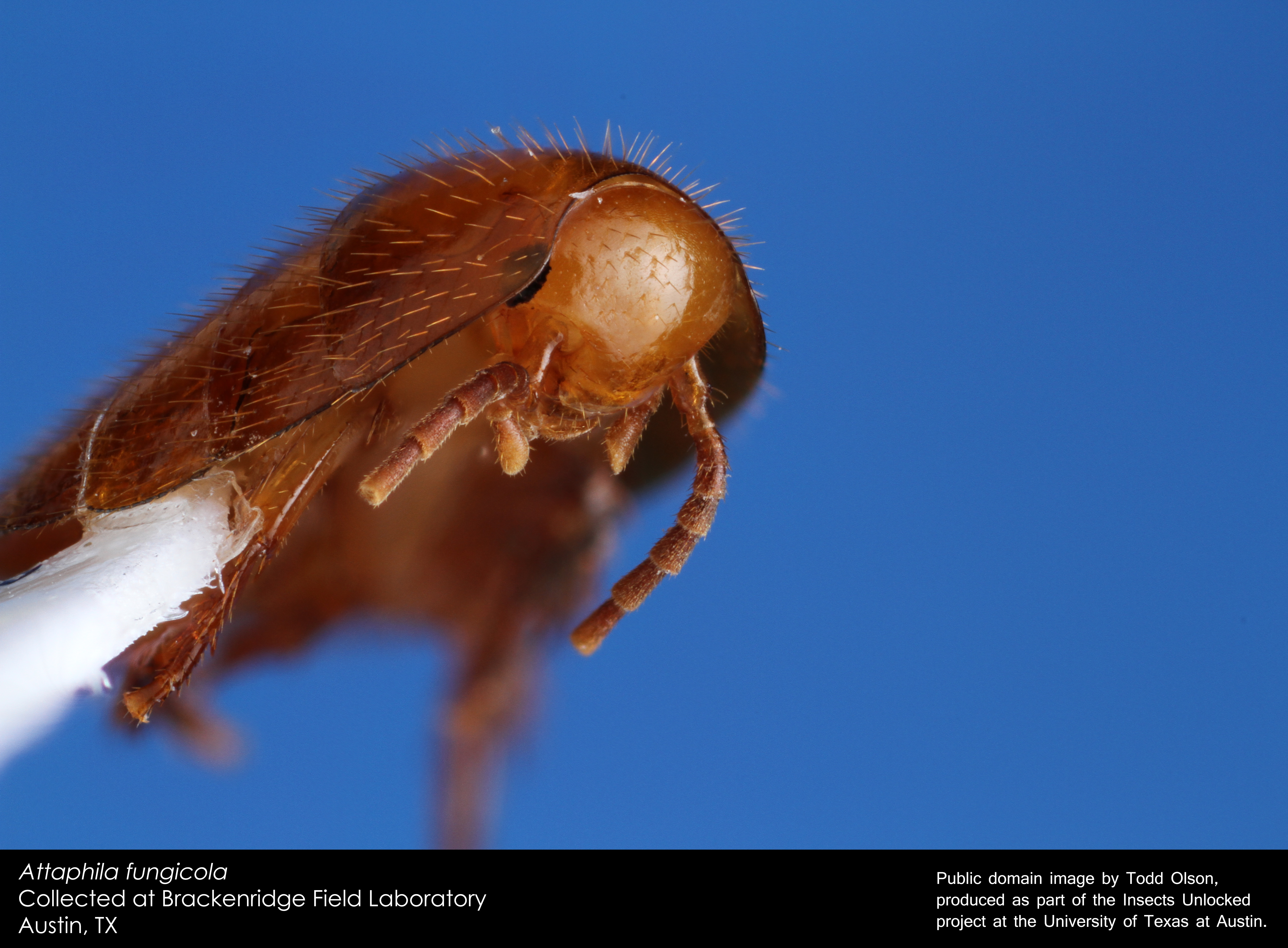 A lot of plants and animals depend on ants in a way that doesn't help or hinder the ant. Many small arthropods make their homes in ant nests and colonies. These might include spiders, silverfish, beetles, and cockroaches, just like in our own homes. An amazing example of this is the recently discovered Texas Mystery Spider (Myrmecicultor chihuaensis)
A lot of plants and animals depend on ants in a way that doesn't help or hinder the ant. Many small arthropods make their homes in ant nests and colonies. These might include spiders, silverfish, beetles, and cockroaches, just like in our own homes. An amazing example of this is the recently discovered Texas Mystery Spider (Myrmecicultor chihuaensis)
Photos by Scott Cutler
Where there are army ants, there is food. When army ants march, their numbers can be so numerous that even birds flying above can see them. These birds, called ant followers, know that insects fleeing the path of these ants are an easy meal. Ant followers don’t have to hunt for insects when they can follow army ant swarms and pick off leftovers. In this relationship, some birds are even completely dependent on army ants for their survival and turn into parasites of these army ants.
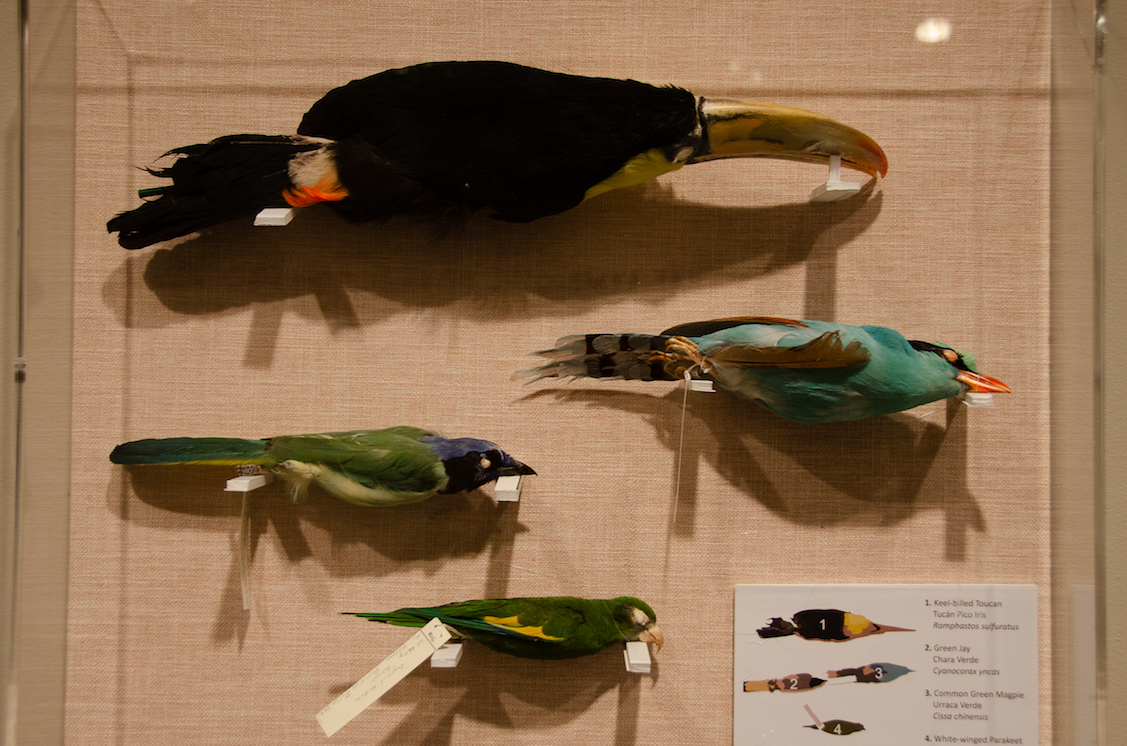
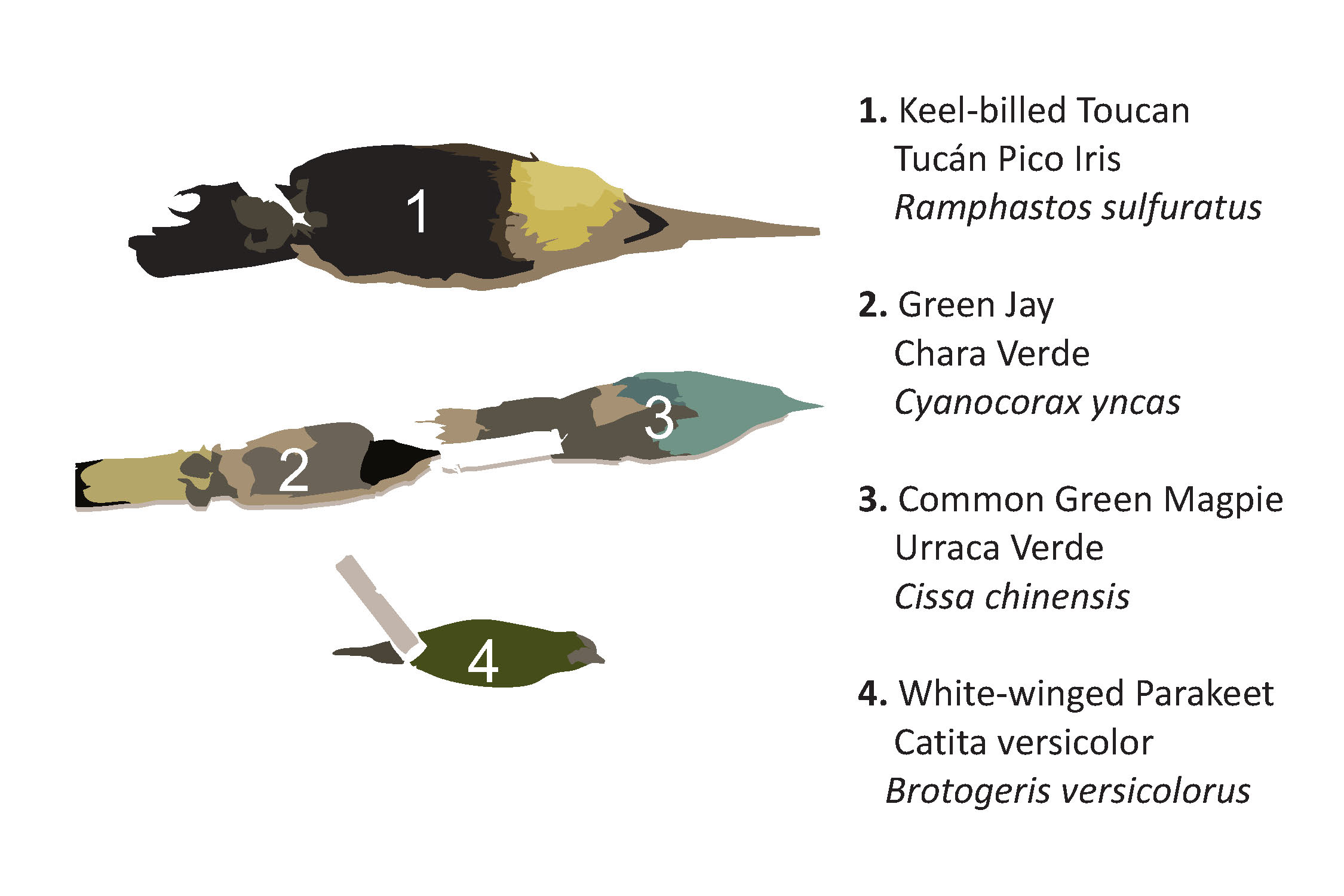
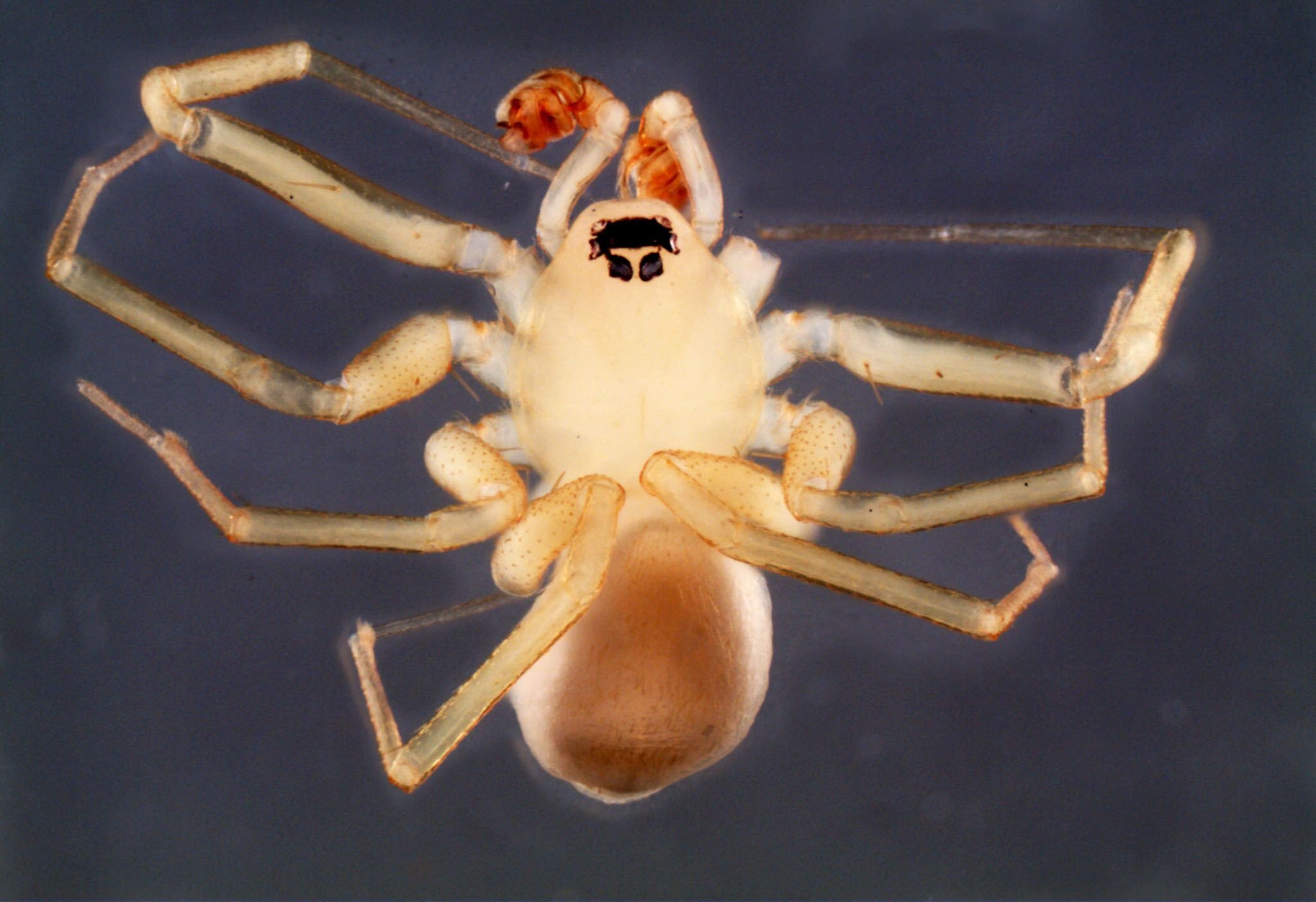 Photo by David Lightfoot
Photo by David Lightfoot
Although spiders are typically solitary, some spiders love living with ants. The recently named Texas Mystery Spider ( Myrmecicultor chihuaensis) was found living in nests of harvester ants at UTEP’s Indio Ranch Research Station. The discovery of this species in the Chihuahuan Desert represents an entirely new family of spiders.
Why would spiders want to live with ants? Spiders may live with ants in order to eat ant larvae or to chemically camouflage themselves with scents of their host. While more research is necessary, scientists at Michigan State University believe the Texas Mystery Spider utilizes the ants to catch a ride to the surface after it rains.
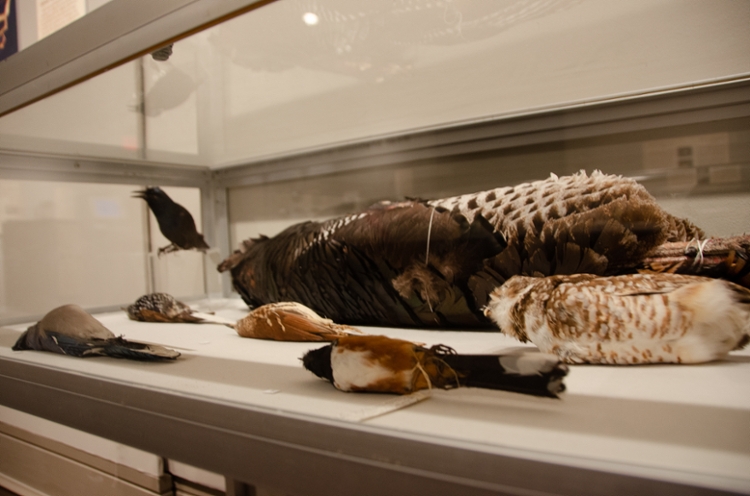 Many species of ants sting or spray a “venom” made of formic acid. Some birds want this acid on their feathers and seek out these ants in a behavior known as “anting.” Birds do this by crushing ants onto certain parts of their feathers with their bills (active anting) or by spreading their wings (passive anting). Why do birds ant? Scientists think that anting may kill parasites, help molting, maintain their feathers, or maybe birds just enjoy the effects of being stung.
Many species of ants sting or spray a “venom” made of formic acid. Some birds want this acid on their feathers and seek out these ants in a behavior known as “anting.” Birds do this by crushing ants onto certain parts of their feathers with their bills (active anting) or by spreading their wings (passive anting). Why do birds ant? Scientists think that anting may kill parasites, help molting, maintain their feathers, or maybe birds just enjoy the effects of being stung.
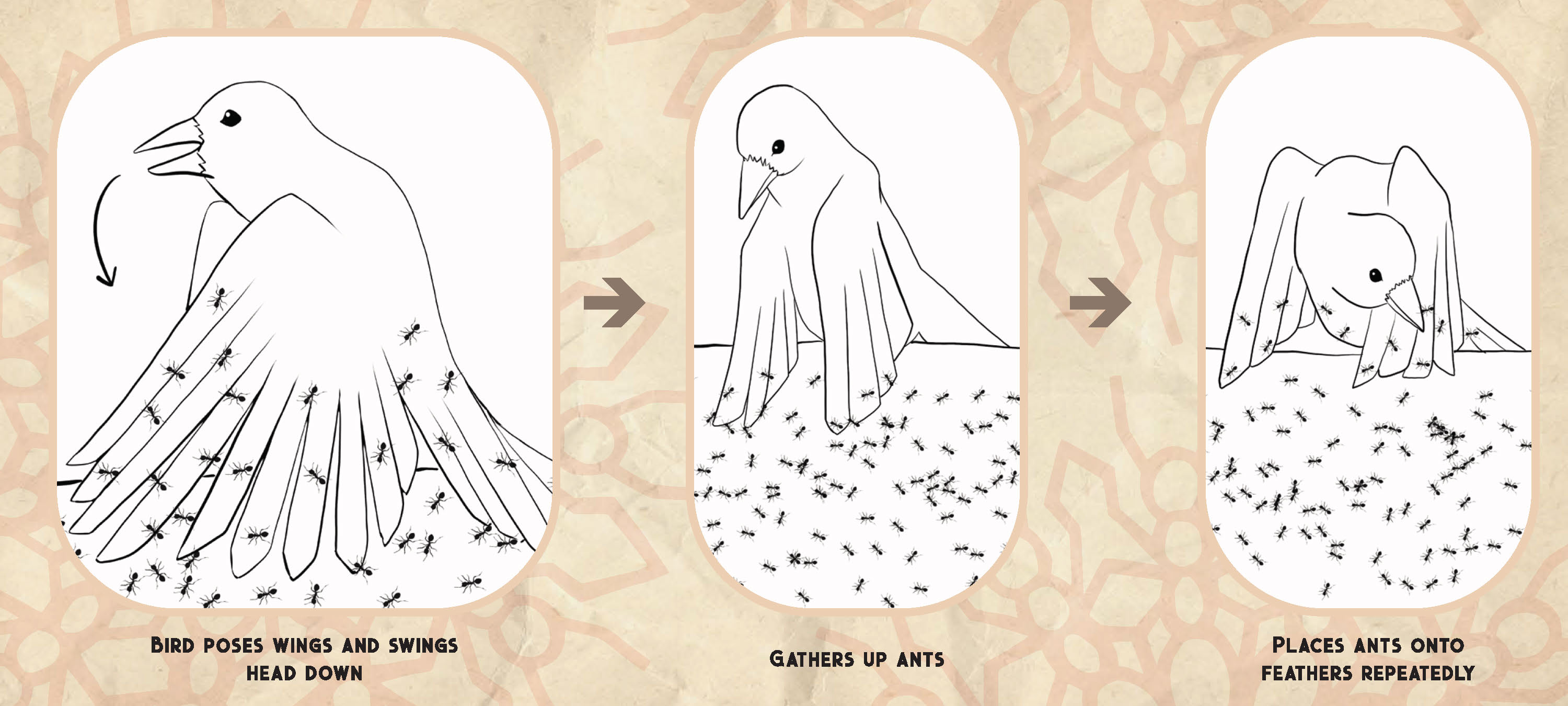
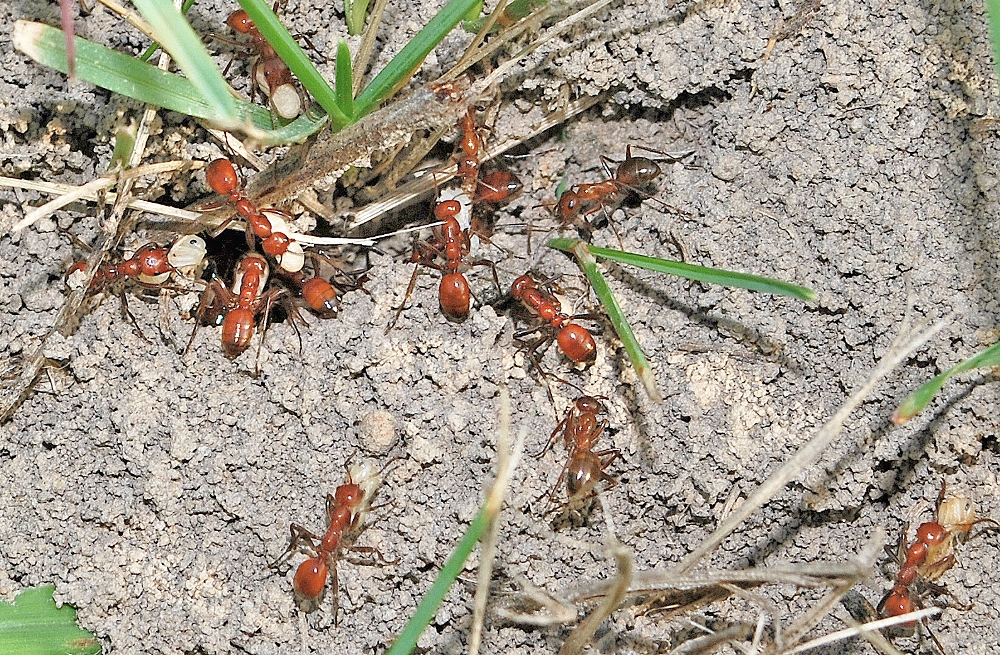
Photo by James Trager
In this relationship, the group, known as a parasite, benefits by harming the other group, called the host. In parasitism, the parasite attaches itself to a host, often grows, develops, and reproduces. Eventually, the parasite or parasite’s offspring leave the host and is finds a new host. Ants can act as hosts for several parasites, including several species of beetles and bacteria. Ants can also act as parasites to other animals.
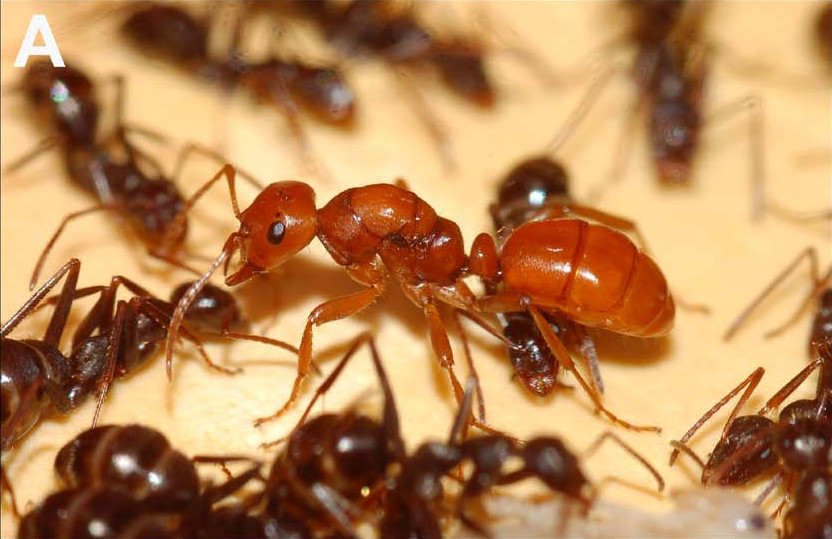
Photo by Jonkerz CC
Like humans, ants can help each other or wage war against each other. Some ant species are also called “social parasites,” meaning they kidnap individuals of another species. When going to war, workers may kidnap larvae of their victims and raise these larvae as their own. These new workers will then raise the larvae of their kidnappers. Queens of the Polyergus genus can kidnap whole colonies by killing a host queen and disguising itself with the dead queen’s pheromones, tricking the host colony into taking care of the new queen and her larvae.
Photos by João Araújo
Inside a colony nest, ants will defend their homes fiercely. Because colonies are hard to penetrate, the Ophiocordyceps parasitic fungus has evolved a sneaky way of overcoming the colony’s strong defenses. The fungus takes control over the ant’s muscles, forcing it to climb up vegetation above the foraging trails of its colony. The parasite then causes the ant to clamp its jaws down on vegetation before killing the ant. From the ant’s corpse, hanging upside down, rises a stalk of the fungus from where it releases spores onto the unsuspecting ants below, ensuring that the cycle continues over and over again. Fungus of the genus Ophiocordyceps have their favorite foods, infecting only the kinds of ants that they have evolved with. Despite what appears to be deadly, the Cordyceps fungus does not cause colonies to collapse and instead infects the occasional individual.
The zombie ant cycle.
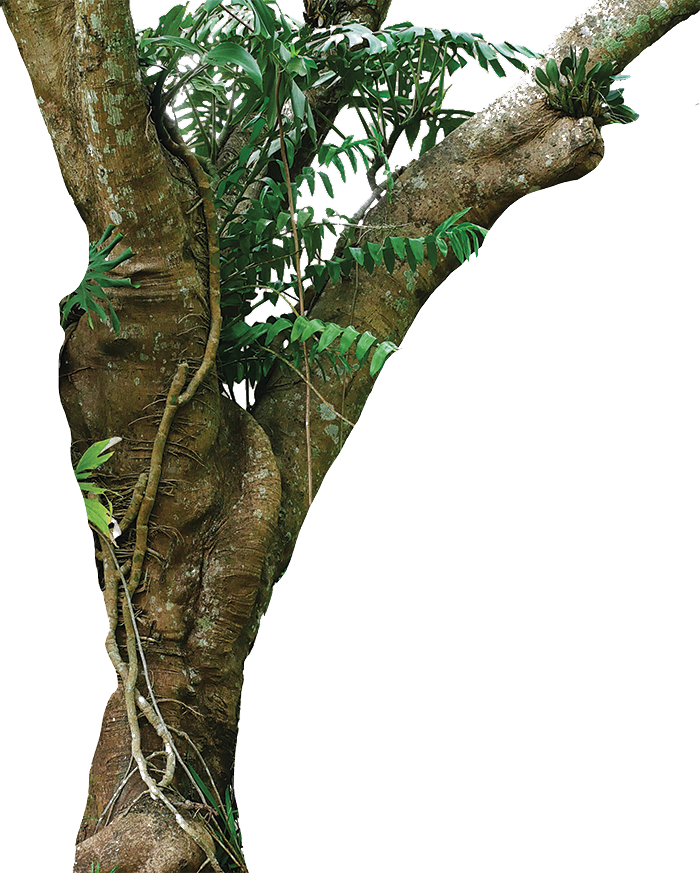
How can we learn how ants interact with their environment? In 2017, the UTEP Biodiversity Collections received $166,000 from the National Science Foundation to map, database, and inventory UTEP professor William P. Mackay’s collection of ant specimens. This project allows UTEP to join a larger database called the Symbiota Collections of Arthropod Network (SCAN). SCAN data that used to be only on the label of each insect specimen is now digitally available to everyone, including ant researchers. For example, researchers can use the data from ant collections to understand how ants affect distributions of other organisms and are affected by them.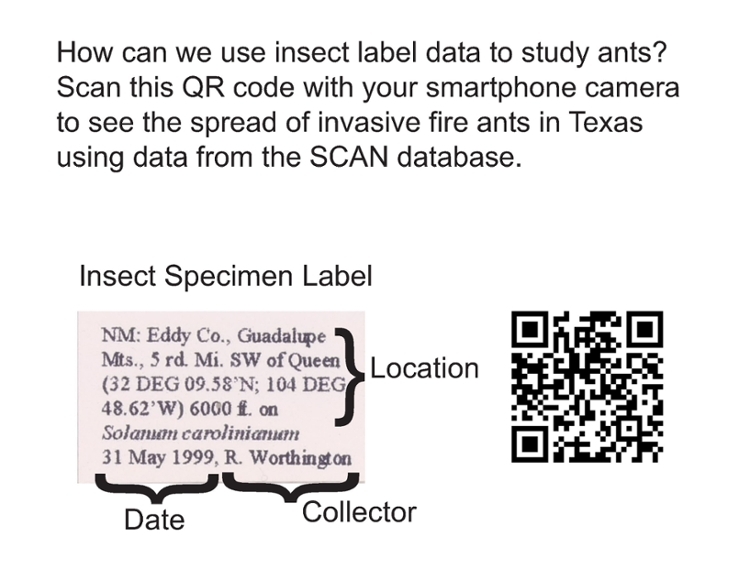
One challenge scientists encounter when studying ants is that ants are small! Although most researchers use microscopes to study ant features, scientists have recently begun to use 3D X-raying technology (MicroCT scanning). These scans allow them to study the external and internal features up close, and build 3D models of ants without destroying the specimens. Getting a closer look at the smaller features helps scientists, like those from Japan’s Economo lab and the University of Florida’s Lucky Lab, understand how ants are related to each other.

Scientists estimate that the total mass of ants on any land is about 20% of all animals and plants. Ants make up a huge portion of any ecosystem and, are an important food source for many animals. In turn, ants also act as predators and control the populations of many animals, such as spiders, parasites, and herbivores. They have the potential to act as natural pest control in some climates.
Amy Briones, Daniel Carey-Whalen, Dr. Vicky Zhuang, Dr. Shawn T. Dash, Dr. Kevin Floyd, Claudia Ley
Dr. Vicky Zhuang, Undergraduate Curators: Muriel Norman, Alonso Corral, Alejandra Ramirez, Veronica Gomez
Amy Briones
Claudia Ley
David Figueroa
Alissa Smith
Victoria Alicia Garcia of UTEP’s Translation Services Office
Luis Ochoa of UTEP Engineering Keck Center, Nikki T. Donegan of EPCC 3D Print Center
Dr. Micheal N. Economo and Dr. Georg Fischer of Economo Lab at Okinawa Institute of Science and Technology and Dr. Andrea Lucky of University of Florida’s Lucky Lab
National Science Foundation – Advancing Digitization of Biological Collections Program
Dr. William P. Mackay, Dr. Eli B. Greenbaum, Dr. Carl S. Lieb, Dr. Richard D. Worthington, Dr. Arthur Harris, Scott Cutler, Big Media, Fab Lab, Clive Cochran, Dr. Elisabeth Sommer, Dr. David Lightfoot, ZeFrank, Adam Vera, Dr. João Araújo, Dr. Norman Horner, Dr. Alex L. Wild, Jacob Valdiviez, Kurtis Watanabe, Sheila Cuilar, Alexa Moreno, Dr. Danny F. Hughes, Josh Mead
